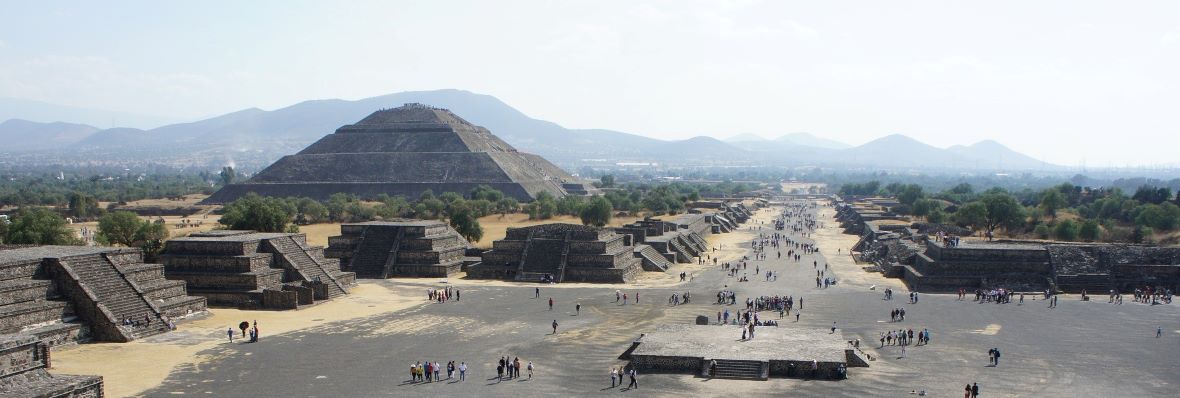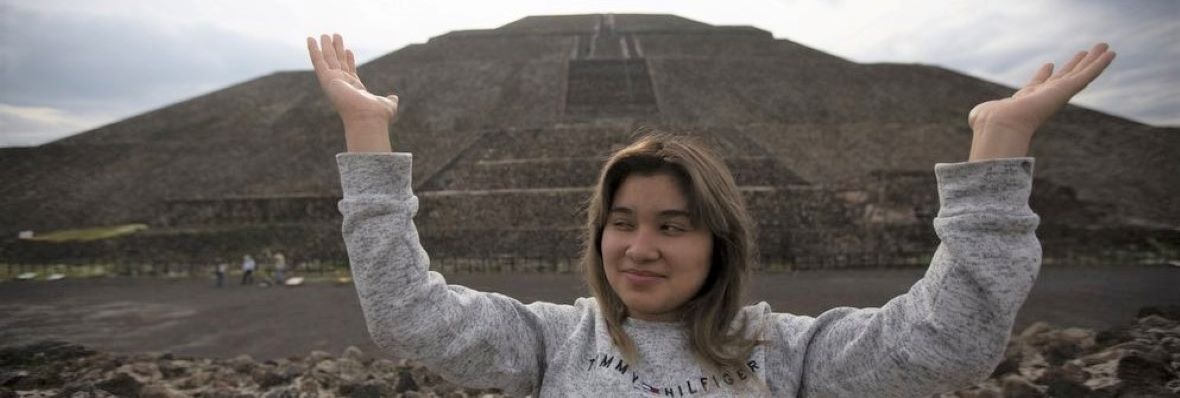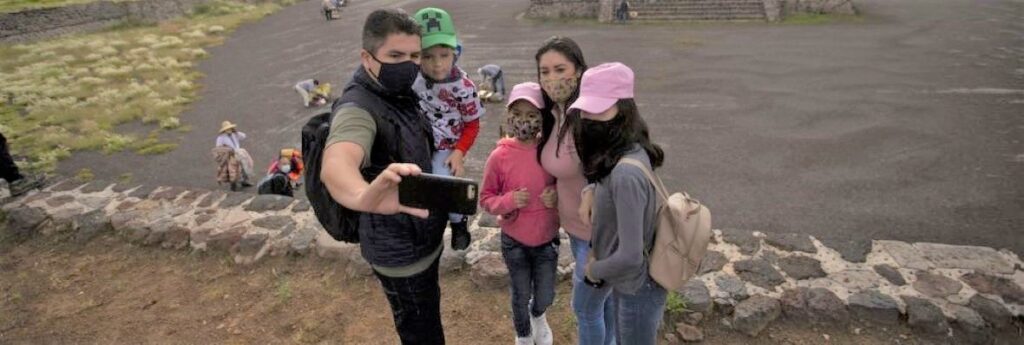Mexico’s pre-Hispanic ruin sites hadn’t seemed so lonely since they were abandoned centuries ago. But in the past week, ancient sites like Tulum, Cobá and Teotihuacan have at last begun to welcome visitors again for the first time since March. (Chichen Itza will apparently reopen later).
With the COVID-19 virus still raging, the few hundred visitors who will be allowed into most sites each day must line-up for limited tickets, get their temperatures checked, wear masks, receive a dose of hand sanitizing gel and stay 1.3 m. apart from each other. Admission is limited to just 30 percent of the sites’ capacities.
At the pyramids of Teotihuacan near Mexico City, the country’s most-visited archaeological site, cash-strapped trinket vendors have returned, but there have been few visitors. Limited to 3,000 per day, visitors are not allowed to climb up the Pyramids of the Sun or Moon, which used to draw tens of thousands for the Spring and Fall equinoxes each year.

Omar Gonzalez visited Teotihuacan with his wife and three children on the first day it opened, saying they had been looking forward to the trip since last year. “We had this trip planned. We had the package and everything else, but unfortunately due to the contingency, we had to postpone it until now,” he said.
Ramon Alvarez Negrete, who sells his handicrafts at a spot along the Causeway of the Dead, a broad stone-paved boulevard that runs between the pyramids, says it had been a hard five months with the site closed.
“Income, well, we had no income, because we are just working at home,” he said. “The little that we had saved we had to spend because the family needs to eat.”
The staggered opening times for archaeological sites across the country have proved confusing for some visitors. There is no single day for reopening, which is in part dependent on making sure adequate preparations are in place and pandemic conditions in each part of the country.
Spanish tourist Mateo Garrosh made it to Teotihuacan after a little research.
“I looked up on internet what places are open, the most emblematic places in this zone, and I found out that they opened today,” he said. “But it wasn’t all that easy, because each place opens a different day.”

Mexico is desperate to reopen its tourism industry, and archaeological sites are a key part of the country’s attractions. Tourism provides 11 million jobs directly or indirectly in Mexico, and many of those workers simply went home to wait it out after people stopped traveling during the pandemic.
Agustin Robles returned to selling carved masks and obsidian figures near the Pyramid of the Sun for the first time in months last week.
“We received no support by the government – be it state, government, municipal or federal,” he said. “It has been very tough to be honest.”

